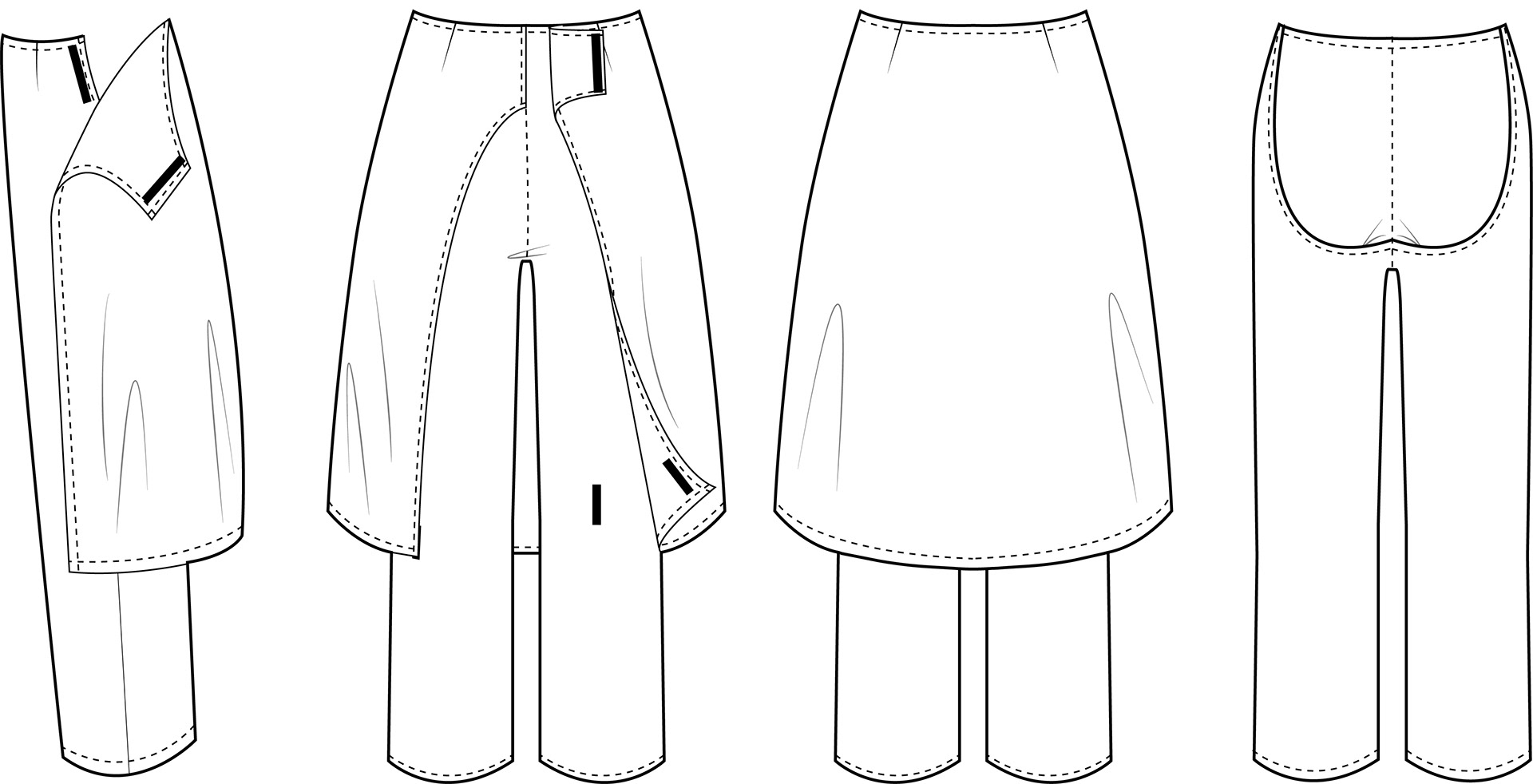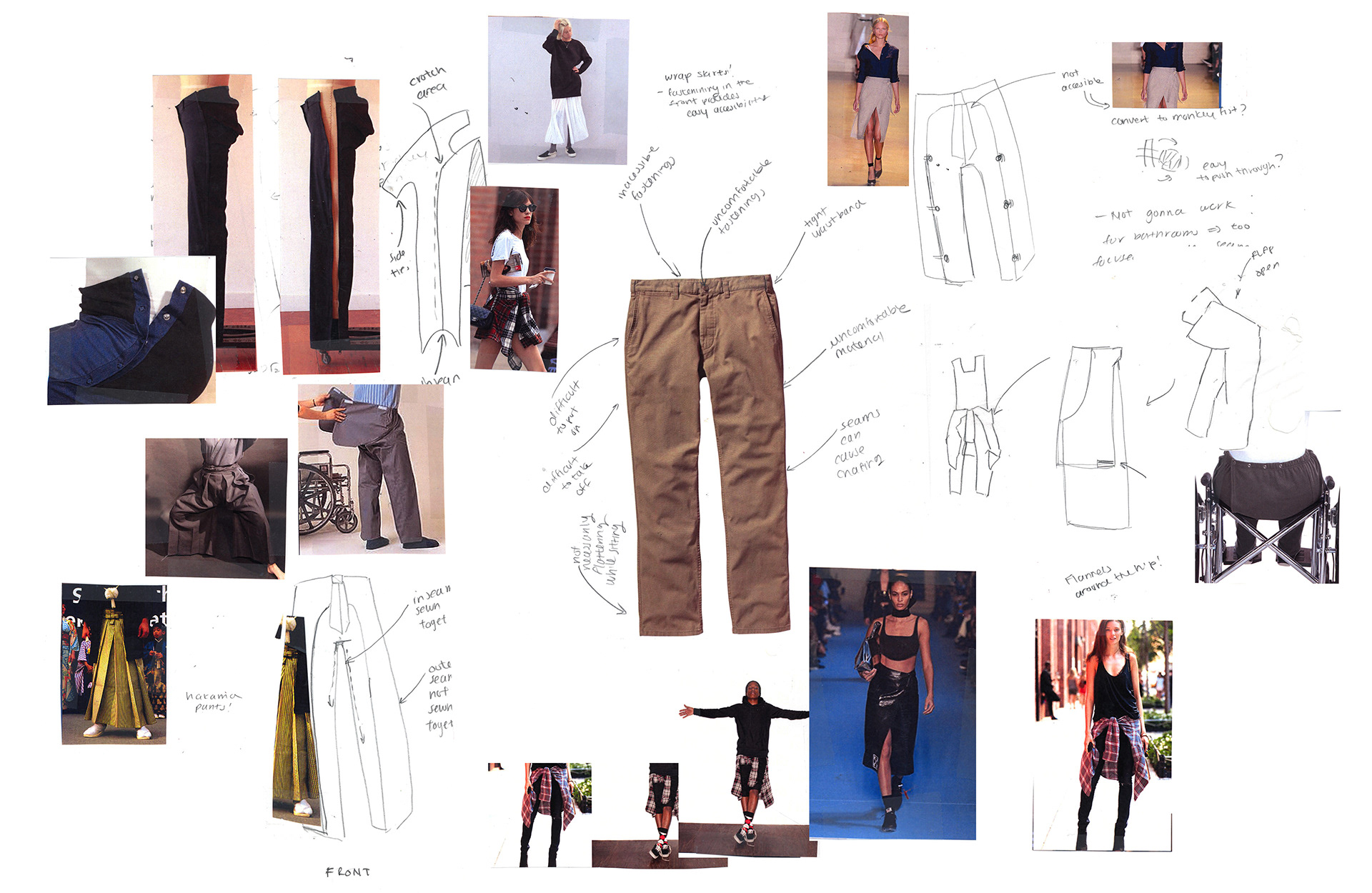Redefine Pants: Wheelchair Accessible Pants
Spring 2019 Personal Project.

Technical Flats
One week project re-examining the idea of pants and how they can be made more accessible for wheelchair users.
--
The project began with a preliminary exploration into the issues that wheelchair users have with the current design of most pants. Throughout the course of the research process it became clear that one of the biggest problems, and what became the primary focus of this project, was how difficult it can be to put on and remove pants.
After identifying the area of focus for these pants solutions that have already been proposed regarding ease of dressing and undressing were explored. While pants that address this issue do exist I found that there was not a huge variety of technical solutions or styles.
Based on my research, I decided to move away from the conventional pant style and explore other shapes and forms. My first point of inspiration came from wrap skirts because of how they close in the front, allowing greater movement and control over the garment. From there I became inspired by the look of a shirt wrapped around the waist, as I enjoy the easy and relaxed appearance and the interplay of layers. The last source of inspiration was the hakama, a traditional type of Japanese clothing. The shape of this pant is wide legged and is secured by four different straps. These choices for inspiration are technical inspiration but also aesthetic. It is important to keep in mind that the design of the pants should be interesting and fun as everyone deserves the opportunity to be stylish and feel empowered through their clothing choices.
The final prototype proposed is sewn along the inseam and midway up the sides, leaving the back open. The back of these pants is then covered by a separate piece that wraps around the outside, enclosing the pants underneath, that uses Velcro as a fastener and is lined. The idea behind this idea is that the front and back can be easily detached from each other for dress and undressing and also for easy access in the restroom. Below are a series of videos demonstrating how this design assists in these scenarios.
--
After testing I went through the redesigning process and identified areas that need improvement as well as other avenues of exploration. For instance, more tests need to be conducted with participants who would be the actual end users. Velcro placement could be improved so that there is a location for the sides of the skirt to latch onto so they are not in the way during use of the restroom. I would also like to explore other latching mechanisms besides Velcro, as the addition of a new material makes the pants more difficult to recycle and therefore less sustainable.
![]()

Selected Sketch Book Pages